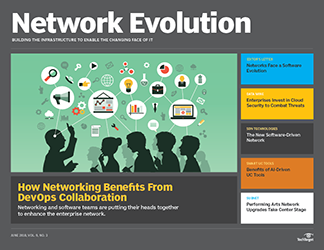PRO+ Premium Content/Network Evolution
Access your Pro+ Content below.
Choosing the right software-driven network technology

This article is part of the Network Evolution issue of June 2018, Vol. 9, No. 3
When CIO Alan Crawford joined City & Guilds Group in 2016, the U.K.-based vocational training nonprofit had made a slew of recent business acquisitions as part of an effort to diversify its offerings and expand its global reach. The organization, founded in 1878 by a collection of London fishmongers, goldsmiths and other liverymen, now operates in more than 100 countries across six continents. And while geographic expansion may have proven strategically wise, it presented some early challenges for the new CIO. One central issue involved implementing software-driven network elements to fix connectivity among company locations. A few months into his tenure as CIO, Crawford transitioned a recently acquired New Zealand company to Microsoft Office 365, the productivity suite preferred throughout City & Guilds. But when it joined the service, which routes traffic to data centers in Europe, the company's connectivity suffered a major hit. Suddenly, basic tasks like sending emails, making Skype calls and sharing documents became ...
Features in this issue
-
DevOps for networking evolves with software
Enterprises have yet to fully integrate a collaborative approach to DevOps for networking, but that's changing as networks become more automated and software-driven.
-
Enterprises use network security in the cloud to combat threats
The market for network security in the cloud is growing as enterprises shift workloads to the cloud to combat potential data breaches and system threats.
Columns in this issue
-
Software-based networks lay foundation of networking's future
Software-based networks are evolving, reshaping how companies do business and blending into legacy networking. Enterprises will have to sort out which approaches work best.
-
Benefits of artificial intelligence in communication
Enterprises that want to enhance their UC strategies can see several benefits of artificial intelligence in communication, collaboration, information access and UC endpoint control.
